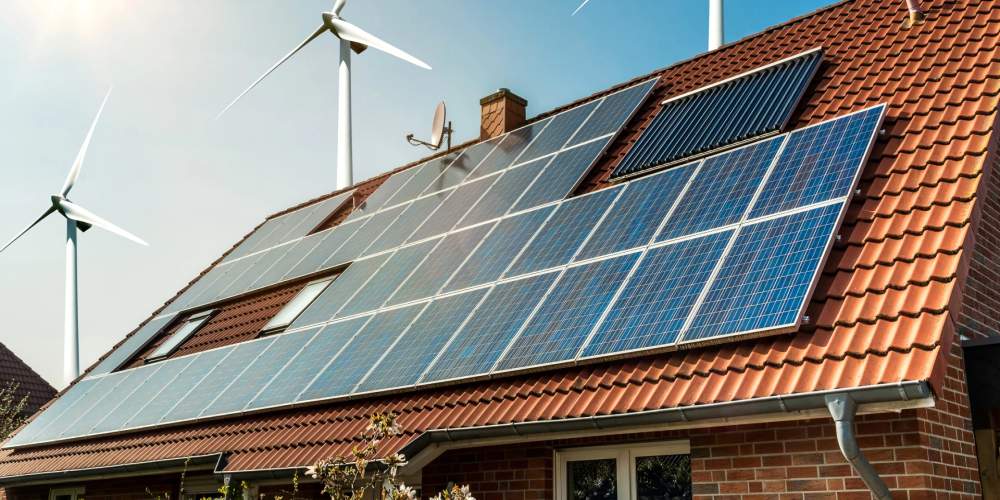
Industry figures show that the number of homes installing rooftop solar panels between January and March is more than double the number in the same months last year.
In the first few months of 2023 there has been a remarkable surge in the installation of solar arrays by households, reaching the highest level in over seven years. More than 50,700 took the initiative to install solar arrays which marks a significant milestone as it is the highest figure recorded since late 2015.
There is a definite shift towards renewable energy sources as energy bill payers are not only turning to renewable energy to guard against the soaring cost of traditional energy but because they are becoming increasingly aware of the importance of reducing their carbon footprint.
COMPARE PRICES FROM LOCAL INSTALLERS
Compare prices from local companies fast & free
Enter your postcode to compare quotes from leading professionals. We promise to keep your information Safe & Secure. Privacy Policy
Collectively, the rooftop solar panels installed in the first quarter of 2023 have a capacity of 265 megawatts of power which is equivalent to half the power generated by a typical coal-fired unit.
Gareth Simkins, a spokesperson for Solar Energy UK said that the steady increase in installations over the past few years can be attributed to households becoming more conscious of the economic advantages and environmental benefits of solar power.
He said:
“In the last year, solar installations have been driven by the energy crisis. The war in Ukraine has driven energy bills higher and there has been a greater awareness that solar panels can help to save on costs.”
The competition watchdog initiated an investigation into the domestic green power and insulation industry last year over concerns that households were not being treated fairly as they struggled to cut their energy bills. The Competition and Markets Authority expressed worries about potential unethical practices, including misleading claims about cost savings, product performance, and suitability.
The recent boom in rooftop solar units recorded by installers registered to the UK’s micro-generation certification scheme (MCS), was also more than double the number of installations reported during the first quarter of 2019, which marked the conclusion of the government’s Feed-in Tariff (FiT) subsidy scheme.
Solar installations reached a peak in late 2015 as households rushed to take advantage of the generous government payments through the Feed-in Tariff (FiT) scheme. However, these payments were significantly reduced by 65% in early 2016 and the scheme was closed entirely in 2019.
The closure of the scheme without a replacement led to a collapse in installations and caused many smaller firms to go out of business. At the time the Labour party accused the government of actively dismantling the UK’s solar industry through its actions.
According to data from the National Grid, despite the recent increase in solar installations, solar energy accounts for only 4.4% of the UK’s electricity generation whereas gas and wind contribute 35.9% and 23.3%, respectively.
The MCS, which collects data from certified installers of rooftop solar panels, home batteries, and heat pumps, recorded its highest number of home battery installations for the quarter, with 351 systems installed. To date this is half the total number of installations by accredited installers. It is important to note that the actual figures for rooftop solar panel and battery installations are likely higher than the MCS tally, as it does not include work carried out by unaccredited installers.
Despite some longer-term challenges around grid connectivity and skills shortages, the outlook for UK solar is positive.
One interesting development on the horizon is a partnership between the National Grid Electricity System Operator (ESO) and Open Climate Fix, a non-profit product lab. The partnership aims to develop AI models capable of providing accurate short-term forecasts regarding sunny and cloudy conditions that impact solar panels throughout the UK. This plan addresses a significant challenge posed by sudden cloud cover, which can cause a significant dip in solar power generation, leading to grid operators resorting to asking for fossil fuel plants to overproduce energy as backup. The AI models use satellite imagery, are trained on terabytes of data and have been shown to be three times better at predicting solar energy generation than ESO's traditional methods.
Find a local installer
Welcome to the biggest directory of UK renewable energy companies





























